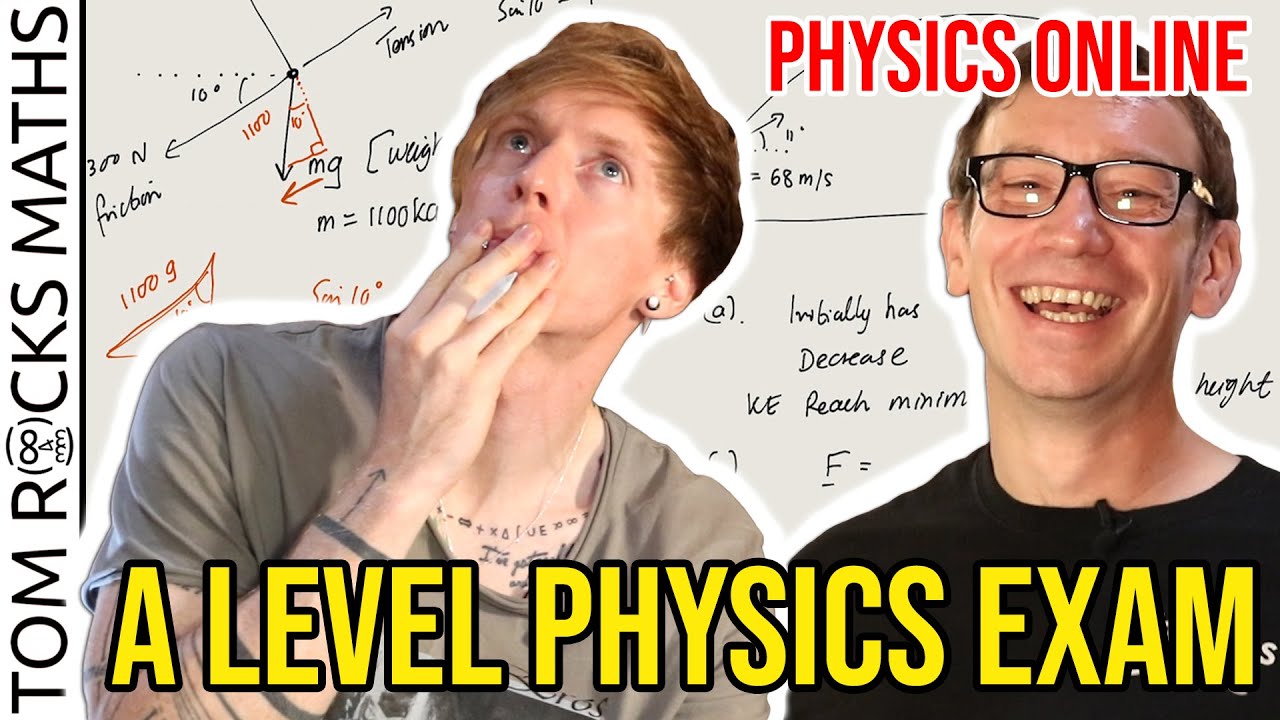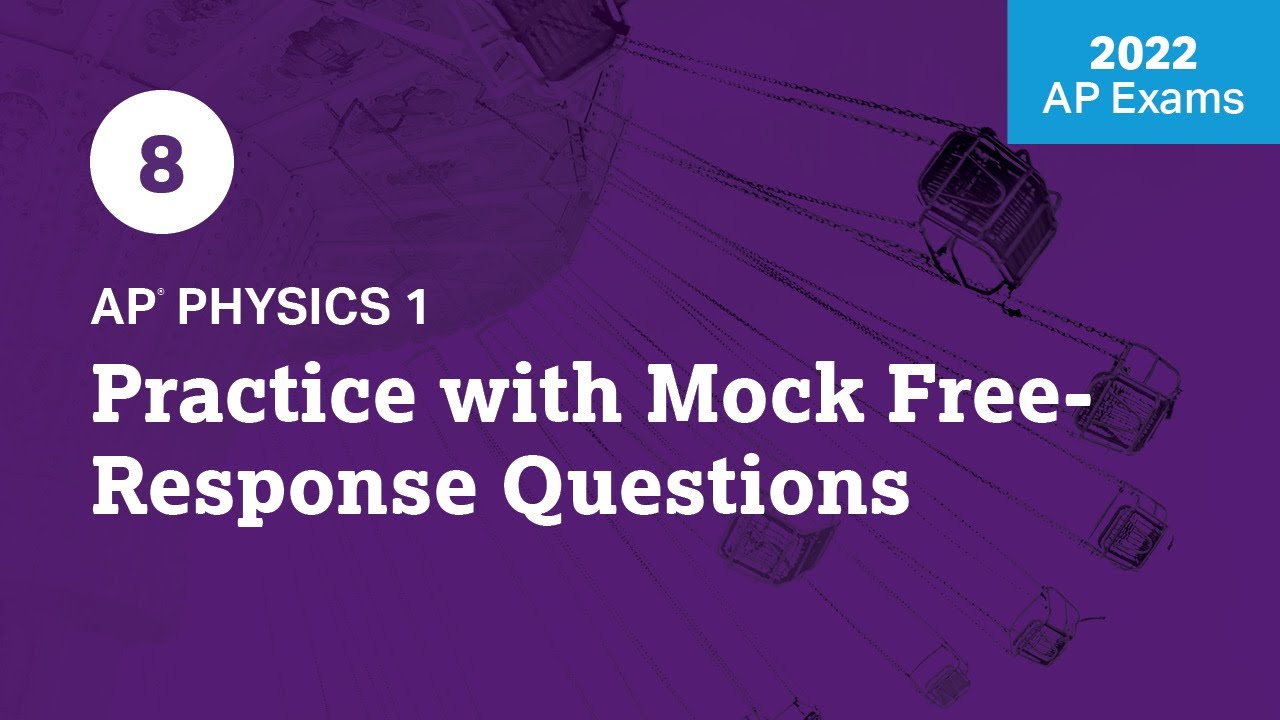Reacting to an 1876 MIT exam ft. Physics Girl
TLDRIn this video, Diana from Physics Girl collaborates with another channel to examine the 1876 MIT entrance exam's geometry section. As an MIT graduate, Diana reflects on the differences in admission requirements over time, highlighting the absence of subjects like calculus, engineering, and sciences in the old exam. The duo explores the exam's vocabulary and concepts, finding them surprisingly understandable despite being over a century old. They attempt to solve a couple of problems, showcasing the enduring nature of mathematical principles and the test's simplicity compared to modern standards.
Takeaways
- 📚 The video features an examination of the MIT entrance exam from 1876, focusing on the geometry section.
- 🎓 Diana, a guest from Physics Girl and an MIT graduate, is invited to participate in the video.
- 🕰 The exam is a historical document, reflecting the educational requirements and standards of the time.
- 🤔 The exam's questions are somewhat unclear, lacking explicit instructions or question marks, which might confuse modern test-takers.
- 📝 The exam consists of seven geometry questions, some of which require proving certain geometric properties.
- 🏫 The video suggests that the 1876 exam was less competitive and more focused on basic education and mathematics.
- 📈 The requirements for getting into MIT have evolved, with modern applicants needing to take standardized tests like the SATs and subject tests.
- 🔍 Some vocabulary from the 1876 exam, such as 'frustum' and 'secant,' is unfamiliar to the presenters and requires research.
- 🧐 Despite being over a century old, the math concepts in the exam are still recognizable and understandable with a modern education.
- 📉 The video humorously points out the differences between the 1876 exam and the comprehensive application process of today.
- 🎉 The presenters successfully solve a couple of the exam's problems, demonstrating the enduring nature of geometric principles.
Q & A
What is the main topic of the video?
-The main topic of the video is an examination of the MIT entrance exam from 1876, specifically the geometry section, and a comparison of the requirements for admission to MIT in the past and present.
Who is the guest in the video?
-The guest in the video is Diana from Physics Girl, who is an MIT graduate.
What is unique about the 1876 MIT entrance exam?
-The 1876 MIT entrance exam is unique because it only includes questions on arithmetic, algebra, and geometry, without any calculus, engineering, physics, chemistry, or biology.
What standardized tests did Diana have to take to get into MIT?
-Diana had to take the SATs, which included sections on writing, math, and reading comprehension, as well as the physics subject test.
What was the level of competition for MIT in 1876 compared to now?
-In 1876, the competition for MIT was likely less intense because it was only a few years after the institution's founding, and fewer people could afford or had the opportunity to attend.
What is the first question on the 1876 MIT geometry exam?
-The first question states a geometric property about a triangle and a line drawn parallel to its base, but it does not explicitly ask a question or use the word 'prove'.
What does the term 'frustum' refer to in geometry?
-In geometry, a 'frustum' refers to the portion of a pyramid or cone that remains after a flat plane has cut through it, parallel to the base, leaving a smaller pyramid or cone on top.
What is the lateral area of a frustum of a pyramid?
-The lateral area of a frustum of a pyramid is the sum of the areas of the four trapezoidal sides formed by the cut.
How does the video demonstrate the concept of similar triangles in geometry?
-The video demonstrates the concept of similar triangles by showing that if a line is drawn parallel to the base of a triangle and bisects one side, it will also bisect the other side, creating two similar triangles with proportional sides.
What was the main challenge the hosts faced while solving the exam questions?
-The main challenge the hosts faced was understanding and defining certain geometric terms and concepts, such as 'frustum' and 'lateral area,' which they were not familiar with.
How did the hosts approach solving the geometry problems from the 1876 exam?
-The hosts approached solving the problems by recalling basic geometric principles and concepts from their education, such as similar triangles and the properties of parallel lines and angles.
What is the significance of the hosts' struggle with vocabulary in the context of the video?
-The struggle with vocabulary highlights the difference in terminology used in the 1876 exam compared to modern educational language, and it also emphasizes the enduring nature of mathematical concepts despite changes in terminology.
What is the conclusion the hosts reach about the 1876 MIT entrance exam?
-The hosts conclude that despite the differences in educational requirements and terminology, the fundamental concepts tested in the 1876 exam are still understandable and doable with a modern math education.
Outlines
📚 Exploring the MIT Entrance Exam of 1876
The video script begins with an introduction to a unique examination of an old MIT entrance exam from 1876, focusing on its geometry section. The host is joined by Diana, an MIT graduate, to explore this historical document. They discuss the differences in the entrance requirements over the years, highlighting the absence of subjects like calculus, engineering, physics, chemistry, and biology, and the focus on arithmetic, algebra, and geometry. Diana shares her own experience of getting into MIT, which involved taking SATs and subject tests, particularly in physics, which was a challenging endeavor given her school's curriculum. The conversation also touches on the evolution and competitiveness of MIT's admissions process and the curiosity about the vocabulary and phrasing used in the 1876 exam.
🔍 Delving into the Geometry Questions of the Past
This paragraph delves into the specifics of the 1876 MIT exam's geometry questions. The host and Diana read through the questions, noting the lack of clarity in some and the absence of explicit instructions to 'prove' certain statements. They discuss the basic geometry concepts that are still relevant today, such as angles in a triangle summing to 180 degrees and the properties of parallel lines. The script includes a brief foray into solving one of the exam's problems, using the concept of similar triangles to demonstrate the relationships between the sides of a triangle bisected by a parallel line. The conversation reflects on the enduring nature of mathematical principles and the surprising understandability of the exam's language despite its age.
📐 Understanding and Proving Geometry Concepts
In this section, the script continues the exploration of the 1876 MIT exam, with a focus on defining and proving geometric concepts. The host and Diana discuss the meaning of terms like 'frustum' and 'lateral area,' and how these relate to the geometry of pyramids. They admit to looking up definitions, highlighting the challenge of understanding archaic vocabulary. The script includes a step-by-step explanation of how to prove that the lateral area of a frustum of a regular pyramid is equal to half the sum of the perimeters of the upper and lower bases, multiplied by the slant height. This involves understanding the geometry of trapezoids and applying the formula for their area to the sides of the frustum.
🎓 Reflecting on the Journey and Invitation to Engage
The final paragraph wraps up the examination of the MIT entrance exam, with the host and Diana reflecting on their experience. They express satisfaction with their efforts to understand and solve the exam's problems, despite having to look up certain terms. The script concludes with an invitation for viewers to try solving the exam questions at home and a teaser for another video on Diana's channel, which will explore a more modern and challenging physics exam from MIT. The conversation ends on a light-hearted note, with a playful reference to being 'admitted to MIT for a second degree,' and a thank you to Diana for participating in the video.
Mindmap
Keywords
💡MIT entrance exam
💡Geometry
💡Arithmetic
💡Algebra
💡Physics
💡Standardized tests
💡Similar triangles
💡Frustum
💡Lateral area
💡Perimeters
💡Trapezoid
Highlights
Introduction of an unboxing video featuring the MIT entrance exam from 1876, focusing on the geometry section.
Diana, an MIT graduate, joins the video to examine the exam and compare it to modern entrance requirements.
The 1876 exam only included arithmetic, algebra, and geometry, with no calculus, engineering, physics, chemistry, or biology.
Diana's personal experience of getting into MIT involved taking SATs and a physics subject test.
Discussion on the simplicity and basic nature of the 1876 exam, suggesting less competition and different educational expectations.
The exam's wording is ambiguous, lacking clear instructions or question marks for some problems.
Some exam questions are not immediately recognizable as problems to be solved, unlike later questions that explicitly state 'prove'.
Diana and the host discuss the evolution of educational requirements and the broader range of subjects tested in modern exams.
The host and Diana solve the first geometry problem from the exam, using concepts of similar triangles and parallel lines.
Diana defines a 'frustum' and 'lateral area' while solving question five, highlighting the need to look up unfamiliar terms.
The process of proving the lateral area of a frustum involves understanding the area of trapezoids and their relationship to the pyramid's geometry.
The video demonstrates that despite being over a century old, the math concepts in the 1876 exam are still understandable with a modern education.
Comparison between the difficulty of the 1876 English exam and a modern one, with a humorous take on the challenges of language evolution.
The host and Diana successfully solve a couple of the exam questions, showcasing the enduring nature of mathematical principles.
Invitation for viewers to try solving the exam questions at home, emphasizing the non-threatening and educational nature of the exercise.
A teaser for another video on Diana's channel, where they will examine a more recent and challenging MIT physics exam.
Conclusion of the video with thanks to Diana and a summary of the experience of examining the 1876 MIT entrance exam.
Transcripts
Browse More Related Video

Thinking Out Loud - Ed Sheeran (Lyrics)

Can an Oxford University Mathematician solve a High School Physics Exam? (with @PhysicsOnline)

2022 Live Review 8 | AP Physics 1 | Practice with Mock Free-Response Questions

Review of all concepts from AP Physics C mechanics 2020

2017 #1 Free Response Question - AP Physics 1 - Exam Solution

1. Signals and Systems
5.0 / 5 (0 votes)
Thanks for rating: